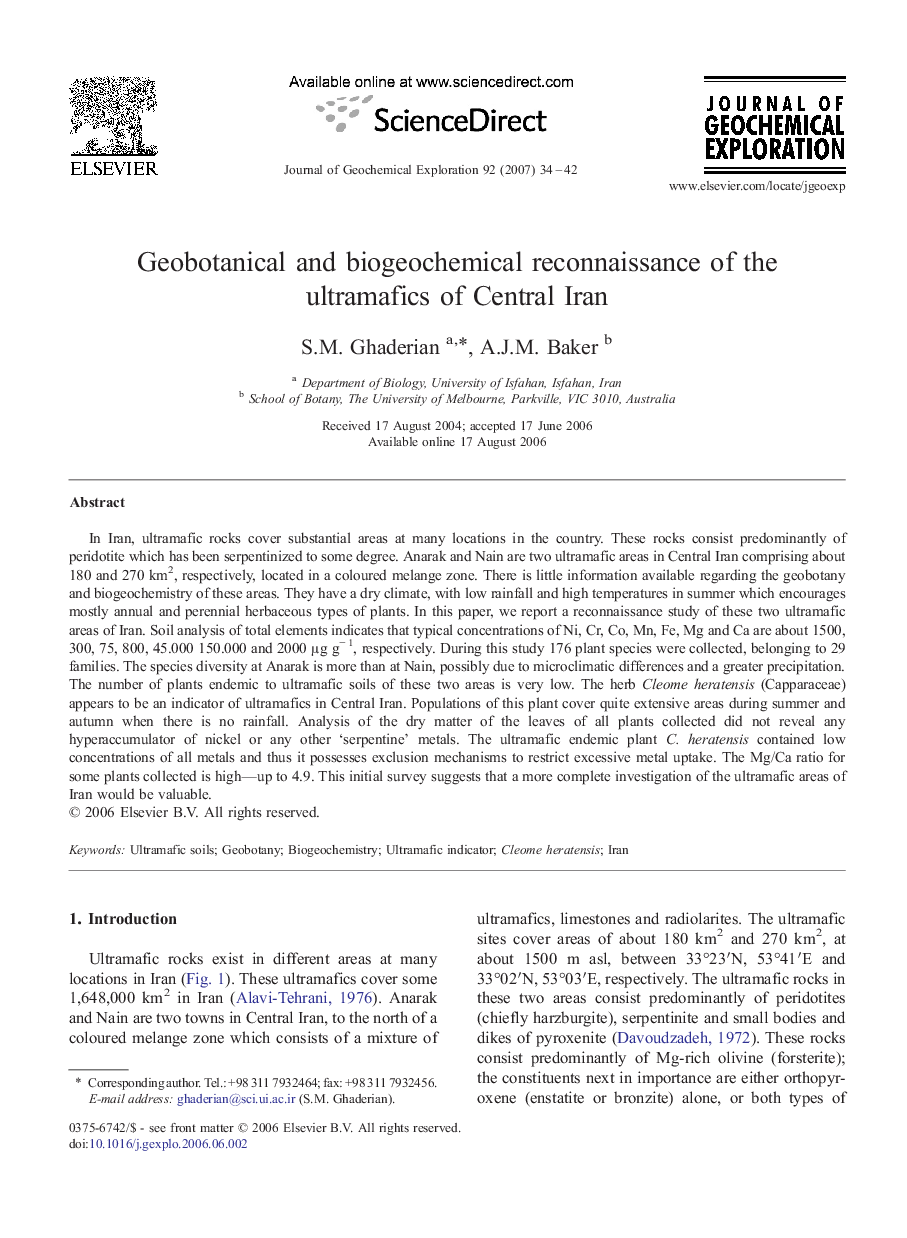| Article ID | Journal | Published Year | Pages | File Type |
|---|---|---|---|---|
| 4458317 | Journal of Geochemical Exploration | 2007 | 9 Pages |
In Iran, ultramafic rocks cover substantial areas at many locations in the country. These rocks consist predominantly of peridotite which has been serpentinized to some degree. Anarak and Nain are two ultramafic areas in Central Iran comprising about 180 and 270 km2, respectively, located in a coloured melange zone. There is little information available regarding the geobotany and biogeochemistry of these areas. They have a dry climate, with low rainfall and high temperatures in summer which encourages mostly annual and perennial herbaceous types of plants. In this paper, we report a reconnaissance study of these two ultramafic areas of Iran. Soil analysis of total elements indicates that typical concentrations of Ni, Cr, Co, Mn, Fe, Mg and Ca are about 1500, 300, 75, 800, 45.000 150.000 and 2000 μg g− 1, respectively. During this study 176 plant species were collected, belonging to 29 families. The species diversity at Anarak is more than at Nain, possibly due to microclimatic differences and a greater precipitation. The number of plants endemic to ultramafic soils of these two areas is very low. The herb Cleome heratensis (Capparaceae) appears to be an indicator of ultramafics in Central Iran. Populations of this plant cover quite extensive areas during summer and autumn when there is no rainfall. Analysis of the dry matter of the leaves of all plants collected did not reveal any hyperaccumulator of nickel or any other ‘serpentine’ metals. The ultramafic endemic plant C. heratensis contained low concentrations of all metals and thus it possesses exclusion mechanisms to restrict excessive metal uptake. The Mg/Ca ratio for some plants collected is high—up to 4.9. This initial survey suggests that a more complete investigation of the ultramafic areas of Iran would be valuable.
